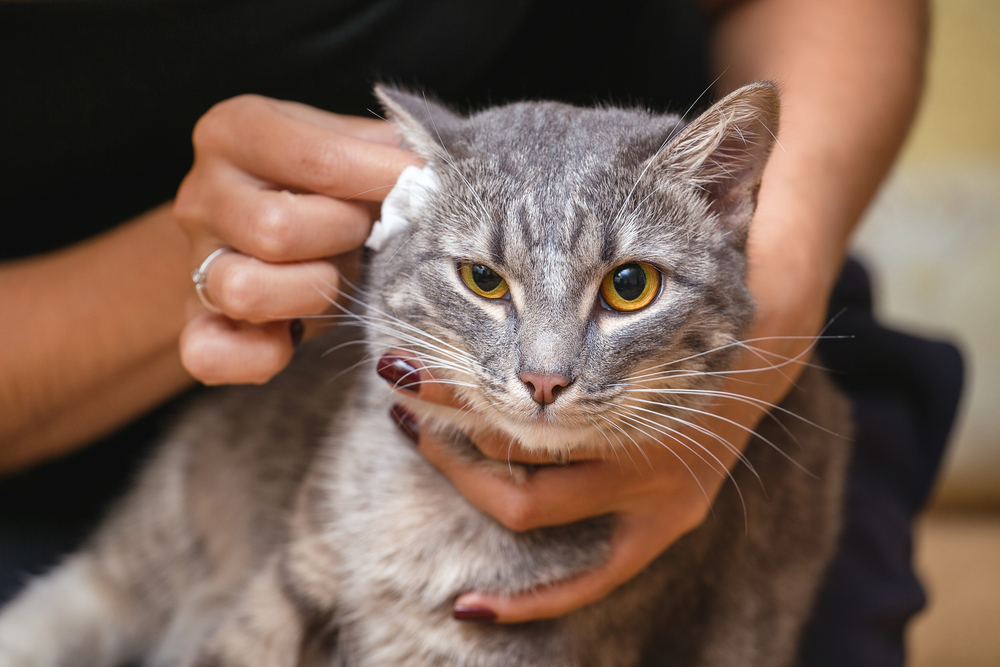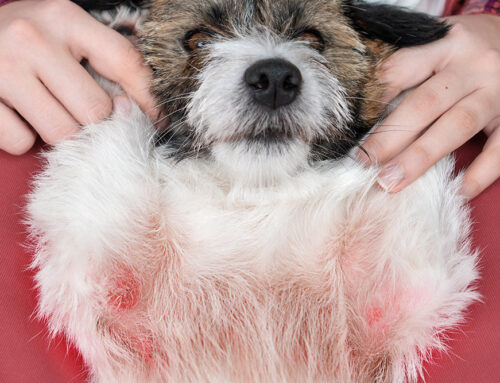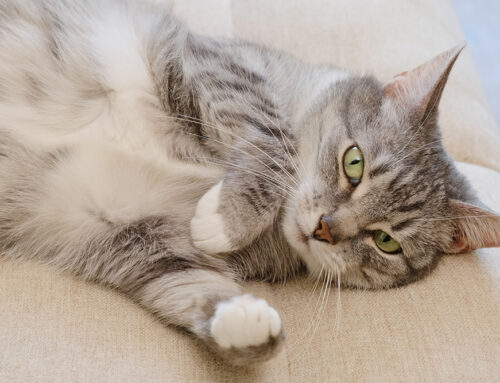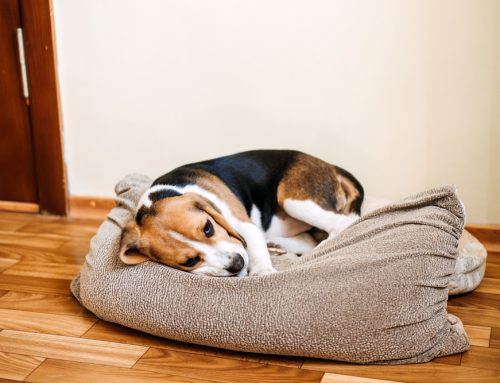Many pet owners never clean their pets’ ears, yet regular cleaning can help prevent infections and promote ear hygiene. Ear health is important, allowing your pet to be aware of their surroundings and potential dangers. Cleaning your pet’s ears doesn’t have to be a stressful task. If you approach this grooming duty carefully and patiently, you can ensure a stress-free, successful experience for you and your furry friend. Our Willow Wood Animal Hospital team guides you through the steps to effectively clean your pet’s ears.
Gather supplies for your pet’s ear cleaning
Before you begin an ear cleaning session, gather all the necessary supplies. Remember that cleaning your pet’s ears can be messy, so choose a place such as the bathroom or laundry room to take on the task. To clean your pet’s ears, you will need the following:
- Veterinarian-recommended ear cleaning solution
- Cotton balls or pads
- Towels or clean cloths
- A hard or nonskid surface on which to stabilize your pet’s body
- Treats
Choose the right time to clean your pet’s ears
Most pets are squirmy about ear cleaning, and your job will go more smoothly after they have exercised or are generally tired and relaxed. Avoid cleaning your furry pal’s ears when they’re excited, anxious, or ready to play. The best time to clean your pet’s ears is after they have eaten a meal, are about to take a nap, or are simply calm.
Pet ear cleaning steps
After you have gathered your supplies and chosen a quiet room, and your pet is relaxed, you can dive into ear cleaning. Follow these simple steps for good results:
- Approach your pet calmly — Have your pet sit beside you while remaining calm and using a reassuring voice. If your pet is particularly nervous about ear cleaning, start by simply touching their ears without attempting to clean them. This helps them get used to the sensation. Give your furry pal a few treats to encourage them while you prepare your ear cleaning tools.
- Examine your pet’s ears — Before you start cleaning, peek inside your pet’s ears to check for infection or other problems. If you notice any abnormalities, consult your Willow Wood Animal Hospital veterinarian before cleaning. Be aware of the following trouble signs:
-
- Irritation
- Redness
- Discharge
- Excessive ear wax that is brown
- Foul odor
- Whining or wincing when you touch your pet’s ears
- Itchiness that includes head shaking and scratching
- Crusting or scabs in or around the ear
- Apply the ear cleaning solution — Most solutions have a long applicator at the bottle’s top. Hold your pet’s earflap gently and lift it upward to expose the inside and the ear canal. Place the applicator tip at the ear canal opening, being careful not to push it too deep, as this can cause discomfort or injury. Squirt a small amount of the solution into the ear canal, following the instructions on the product label.
- Massage the ear base — Use gentle, circular strokes to massage the ear base for about 20 to 30 seconds. This motion helps distribute the cleaning solution and loosen dirt or debris trapped in the ear canal.
- Wipe away dirt, debris, and the remaining cleaning solution — After massaging the ear, let your pet shake their head to allow the loosened debris to come out. Use a cotton ball or pad to gently wipe away any visible dirt or debris from the inner earflap. Be careful to avoid causing irritation or injury.
- Repeat when necessary — If your pet’s ears are particularly dirty or have a lot of earwax, you may need to repeat the process. Always use a fresh cotton ball or pad for each ear to prevent bacterial spread.

- Reward your pet throughout each step — Giving your pet treats is a great way to create a positive association with the ear cleaning routine. Once you’ve finished cleaning your pet’s ears, reward them with another treat and verbal praise to reinforce their cooperative behavior. This positive association with ear cleaning makes the experience more enjoyable for your pet.
Make ear cleaning a part of your pet’s regular grooming routine, including brushing their coat and teeth. Depending on your pet’s breed and individual needs, you may need to clean their ears weekly or monthly. Consult your veterinarian for guidance on the appropriate frequency for your pet’s ear cleanings.
By following our tips and approaching ear cleaning with patience, positivity, and gentleness, you can ensure a stress-free experience for your four-legged friend. Need help with cleaning your pet’s ears? Call our Willow Wood Animal Hospital team to schedule your pet’s wellness exam and get additional ear cleaning tips.







Leave A Comment